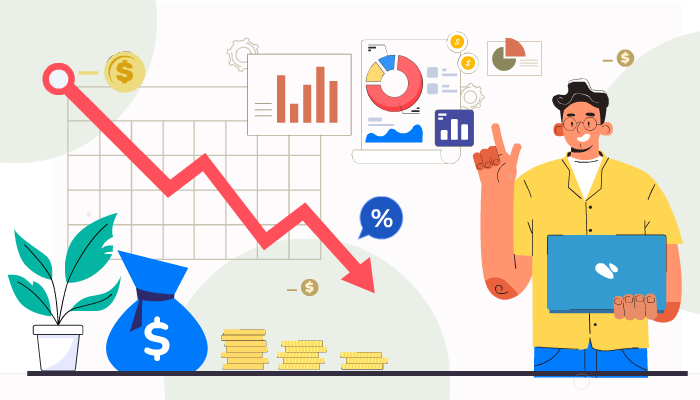With businesses focusing on finding new ways to save and reinvest in their resources, outsourcing has become an essential part of core business practices. So much so that the cost remains the main reason why a company outsources in the first place.
The greatest advantage with outsourcing is that it has different models for different business requirements.
Different strokes for different folks
Take onsite outsourcing for instance; it is a hybrid model of sorts which falls somewhere between outsourcing and insourcing wherein the resource works on-site but remains on the vendor’s payroll. This gives the client greater control and an inherent satisfaction of security because of the location advantage.
Offshoring, on the other hand, gives greater flexibility in terms of greater pool of resources, cost and time as the outsourcing is in another country. Goes without saying that the key to getting offshoring right lies in the vendor’s access to advanced technology and infrastructure.
However, with both on-site outsourcing and offshoring, even with the process seeing tremendous changes with the ever-evolving technology, outsourcing does not come without its own issues.
Why?
Seeing the unseen: The issues through remote evaluation
Those experienced in outsourcing their projects know that parameters such as communication, work culture, infrastructure and such are unique to every organization and owing to these hiccups do show up along the way.
Businesses who are first-timers in this practice too face challenges as they have limited idea of what business model is suitable for their precious project and whom to pick for it in the first place.
And this is why the top concern is choosing the right vendor for the job.
However, more often than not, many see outsourcing through a particular prism and pick the vendor through remote evaluation. After the negotiations on costs, the ball is set rolling and the usual steps of contract, trial run, and appraisal follow.
Clients use basic parameters of outsourcing –different outsourcing business models offered by vendors and then checking the strength and alignment of these models’ goals with the project.
The idea of visiting outsourcing firms on site does not even cross their minds.
And this where they lose more than what they gain!
Fresh eyes
Many times on-site visit is often not seen as indispensable and it becomes difficult to tell the difference between a reputed vendor and a sub-standard one. Because you cannot SEE it! You have no parameter to compare to in the first place.
The diligence in checking up on your vendors would make you ask the right questions rather than just taking the cost factor into account.
It would ensure that the vendor is providing the best resources for the project and may even benefit the project with long-term outsourcing strategies.
Questions! So many questions!
Due to limited contact with the vendor and limited information on their website, there is nothing concrete to see.
The client’s limited interaction with the vendor limits the scope of their research on them. It also limits the scope to ask important questions and does not address concerns that may show up, such as:
- Can the vendor deliver on time and follow strict deadlines?
- Is the data safe in the vendor’s hands? Do they have security measures in place?
- Does the vendor even have the goods to back his services claimed on their website?
- Does the vendor provide post-project maintenance services?
- How to make sure the business model the client has chosen is the best fit for the project?
- What are the client’s options when the vendor delivers a sub-standard product or service?
- How would you ensure the vendor is providing the right talent when it comes to on-site outsourcing?
- If you are outsourcing on-site, would they be able to align with the client’s work infrastructure?
- How would the client ensure that the best practices of offshoring are being followed at all?
If not addressed, concerns might translate to reality and may even jeopardize the project, costing the client not just their hard-earned money but time as well.
So, here we will see why visiting Outsourcing Firms On-site is a good idea.
Day One of Interaction vs Day One of Work Day
Whether it is on-site outsourcing or offshoring, visiting the outsourcing firm on-site is a better idea because this would get you a first-hand experience on dealing with the firm and how professional and efficient their work flow and coordination is. It would ensure that the firm you are choosing is not at least the run-of-the-mill sweatshop with a fancy website.
Client site visit would give you a clear picture of how the firm operates and what to expect and may even help you identify problems and avoid assumptions altogether. You could learn about cultural connotations and peculiarities, which will help you streamline your project. And this also works the other way around as well.
The client visit experience could be enriching for the vendors too as this would also give them a chance to gauge what to expect when it comes to one-on-one interaction with the client.
Visiting clients will have a one-on-one interaction, giving them an opportunity to unearth key information about the firm that is not visible on the website and what they could even be neglecting in favor of cost effectiveness.
However, negligence while outsourcing via remote evaluation is not limited to asking the right questions.
It also limits the judgement on other parameters for a successful outcome.
The important parameters for successful outsourcing
Your visit will compel you to tick some boxes which otherwise wouldn’t even come to mind in the first place. Moreover, this would ensure that you could evaluate them on other parameters as well.
The trip on-site would ensure that first experience with the vendor won’t be on Day One of the work day but before you even sign on the dotted line.
Your due diligence would allow you the room to judge them on a range of essential parameters with your own eyes, such as:
- Rapport and Interaction
- Office Infrastructure and Work Environment
- Team Set-up and Support services
- All-round Professionalism and Work Ethic
If you, as a business, have outsourced remotely, you tend to be neglectful of the above considerations which are an absolute must.
How? Let us take a look.
For example, when you, as a prospective client, visit a vendor on-site, you may come across Vendor A offering a pick/drop off transportation facilities with Vendor B not doing so or not even having the means do so. This would give you a basic idea to judge them on their interaction, flexibility and building rapport.
Secondly, the office infrastructure is a dead give-away of their resources and how they deal with their clients. This simply cannot be hidden behind a fancy website. This would give you a chance to check on their technical set-up and work environment. A good technical set-up with an expert team or consultant would mean high-quality streamlined work ethic. This would also enable a first-hand experience on how strong the vendor’s measures are in terms of data security.
If not, then it would be wise to take an about-turn if you see their systems dating back to the 80s. After all, if the work has to be done via on-site outsourcing or offshoring, it has to be of assured quality with a talented staff. And this is why the client should give on-site visit a thought.
The low rates may have been a big factor in attracting the client to the rogue vendor but the above will be hard to miss. You’d probably not get to see this if you did not plan a visit on-site.
So, why jeopardize your project to save a few pennies?
Visiting on-site means that clients can also compare the services and products offered by two or more vendors and then choose the right business model that aligns with their project.
Less and more
So now, the client has interacted with the vendors, seen their set-up and professionalism. While one vendor may be charging a higher rate for their project, their professionalism would a mirror to their services. For instance, once the project is completed, many vendors offer additional maintenance services and valuable add-ons, some do not.
In comparison between vendors, one would definitely emerge as the right choice in terms of all the above parameters while the other simply won’t match the big talk on their website. The advantage of working with a reputed vendor and finding the right business model becomes crystal clear.
The client could also rethink on whether the project needs on-site outsourcing or if offshoring the project would be better!
Outsourcing, as a business strategy, helps a business save money which is then used to stay more competitive in other important areas and hence also innovation.
This is the big factor behind why outsourcing and US economy are so closely connected and why US companies are now global networks serving across the world.
And why not?
Numbers don’t lie
As per United States outsourcing statistics, 18% of small businesses switch to outsourcing for expert assistance as they don’t get to hire the right resources. The study also notes that 52% of small businesses will continue to outsource throughout 2020 which takes even greater importance considering the pandemic.
And it is not restricted to smaller firms.
Research also shows that 29% of firms which have less than 50 employees look outside for their projects to be done, whereas 66% businesses which have 50 or more employees outsource.







